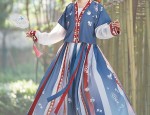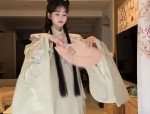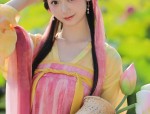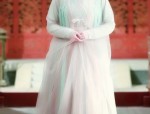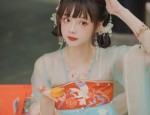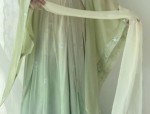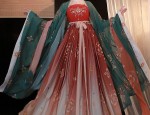Reinventing Qipao:An Autumn Elegance
In the heart of autumn, where the air is crisp and the leaves are a riot of reds and oranges, there is a timeless beauty that thrives in harmony with the season. It is in this context that we revisit the qipao, a traditional Chinese garment that embodies both Elegance and grace. This article explores how we can modernize and improve the qipao for the autumn season, while maintaining its rich cultural heritage.

The qipao, also known as the cheongsam in Hong Kong and overseas, is a traditional Chinese women's dress that dates back to the early 20th century. Its intricate designs and elegant cut have made it a symbol of Chinese culture and fashion. However, to keep up with modern fashion trends and to cater to contemporary lifestyles, it's essential to update this traditional garment.
For the autumn season, we propose a series of improvements that will not only make the qipao more comfortable but also enhance its aesthetic appeal.
-
Incorporate Sustainable Fabrics: As we move towards more sustainable fashion practices, it's essential to use eco-friendly materials for the qipao. Fabrics like silk, cotton, and hemp are not only sustainable but also provide natural warmth for the colder autumn months. Additionally, these fabrics are breathable and comfortable, making them ideal for everyday wear.
-
Modern Cut and Design: While retaining its traditional elegance, the qipao can be updated with modern cuts and designs. For instance, adding a slit on the side or at the back adds a contemporary touch without compromising its traditional essence. Additionally, incorporating contemporary patterns and colors like deep reds, maroons, and golds will give the qipao a more modern and autumn-appropriate look.
-
Improved Fit and Comfort: The qipao should be comfortable and fit like a second skin. It should hug the body in the right places without being too tight or too loose. To achieve this, designers should use modern techniques to measure body shapes and create a more tailored fit. Additionally, adding elastic panels or using stretchable fabrics in key areas will provide a more comfortable fit without compromising its traditional appearance.
-
Blend Traditional Elements with Modern Details: The essence of the qipao lies in its intricate designs and details. However, modernizing it means blending these traditional elements with contemporary details. For instance, you can use traditional Chinese embroidery patterns on modern fabrics or incorporate traditional jewelry elements like buttons or embellishments. These details will give the qipao a unique and modern touch while maintaining its traditional heritage.
-
Experiment with Lengths: The length of the qipao can be experimented with to create different styles and fits. While the traditional length was typically shorter, modern versions can be longer to cover more of the leg or even go for a mini-length version for a more contemporary look. This variety will provide more options for different occasions and body types.
In conclusion, the qipao is a timeless piece that deserves to be updated and modernized. By incorporating sustainable fabrics, modern cuts and designs, improved fit and comfort, blending traditional elements with modern details, and experimenting with lengths, we can revive this traditional garment for the modern era. The autumn season provides an excellent opportunity to introduce these improvements while maintaining its cultural significance and aesthetic appeal. As we embrace this season of change and renewal, let us also celebrate the beauty of traditional fashion that has been rejuvenated for a new generation.

 Previous Post
Previous Post

